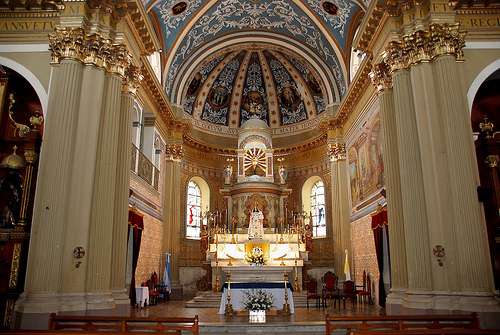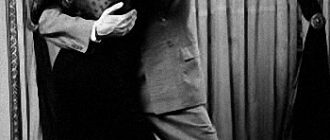Facts about the religion in Argentina provide an interesting insight to the people of the country and culture.
The formal religion of Argentina is Roman Catholicism and, until a change to the Constitution in 1994, it was necessary that any elected President be a Roman Catholic. Although a significant number in Argentina do not attend mass, you will undoubtedly witness expression of religious devotion as individuals go about their every day business. This includes performing the sign of the cross as they pass a church or related religious area and also, reciting religious utterances at appropriate times.
As is the case of most major religions worldwide, the Catholic Church in Argentina is not unusual in that it has a number of different factions. Interestingly the Catholic Church has been controversial in its defense of Government activities. For example, the Church lent support to the Military government during the 1970′s and the early part of the 1980′s despite it’s catalogue of human abuse and corruption, for example the murder, kidnapping and torture of religious workers.
Although Roman Catholicism is the predominant religion in Argentina, it is not the only religion in Argentina. The country is also home to other religions such as Spiritualism, Jehovah Witness, Mormonism, Shamanism and Buddhism. Evangelical Protestantism is also gaining pace in Argentina but primarily within the poorer and working class areas.
Veneration of Saints and the dead and stories of miracles play a key religious role for a significant number of individuals in Argentina. Take for instance a famous religious story within Argentina which happened approximately 5 km from the city of Luja¡n. In 1630, it was necessary for a wagon delivering a load to pass through Luja¡n to reach its destination. However, it became stuck and the driver was unable to move it. At some point, he happened to remove a terra-cotta statue of the holy Virgin Mary from the wagon and at this point it became unstuck and able to continue its journey. The driver concluded from this that the holy Virgin Mary wished to remain in Luján, He consequently erected a chapel where she had chosen to stay and the area has since become a much loved chapel and place of pilgrimage.
A further example of religious veneration in Argentina relates to a the hundreds of thousands of pilgrimages who visit the site of “Difunta Correa” on an annual pilgrimage. This is contrary to attempts made by the government and church to dissuade the practice.
The legend of Difunta Correa is one of the most beautiful and inspiring legends within Argentina. During the civil wars which took place in the 1840′s, it is said that Deolinda Correa accompanied her husband’s battalion carrying both food supplies and her baby son. Unfortunately food and water soon ran out and Deolinda died of starvation and exhaustion. When her body was found, her baby son was still nursing from her breast. Upon witnessing this miracle, a shrine was built in her memory.
The site of veneration now hosts 17 chapels and numerous exhibition rooms. Religious devotees visit with the hopes of intercession and supernatural favours and leave (amongst inexhaustible supplies of water for the Deolinda Correa), other gifts such as models, food, flowers, money etc. Miracles attributed to Deolinda include the healing of the sick and facilitating the acquisition of homes and cars.
Religion in Argentina is therefore, not a straightforward affair and the types of religions practiced are diverse. Within the predominant Roman Catholic religion there are practices of devotion and veneration which are inextricably linked to the history of Argentina and its legends.





